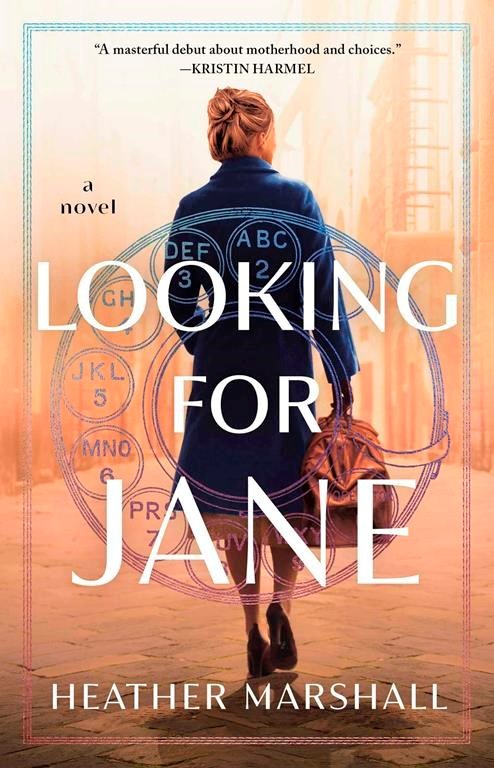“Looking for Jane” by Heather Marshall (Atria)
Gripping from the moment it begins, Heather Marshall’s novel “Looking for Jane” is getting a well-deserved re-release to hit the post-Roe v. Wade United States market.
The story kicks off with a striking prologue: A letter informing Nancy that she was adopted is misdelivered, then misplaced. Years later, when Angela discovers it in a dusty antique drawer, it sends her down a road of discovery as she digs through generations of women in an effort to reunite the letter with its intended recipient.
But, despite the author's clear stand on the side of abortion rights for all women, the novel is well-rounded in its representation of women in various stages of their lives with different reproductive goals.
Nancy is horrified after she begrudgingly accompanies a friend to an illegal abortion in 1979, when the two are in their teens. Angela is undergoing another stressful round of in vitro fertilization attempts for a desperately wanted pregnancy in 2017. And in 1960, Evelyn finds herself at one of Canada’s homes for unwed mothers, where she’s given no choice but to give her baby up for adoption.
Replete with oddly satisfying descriptions — “a pale, doughy man with a voice like cold oatmeal” — and good-natured cliffhangers, “Looking for Jane” has the momentum of a high-speed chase as Angela races back to uncover the past and Nancy and Evelyn’s timelines converge and then speed toward the future.
Marshall approaches these incredibly personal and emotionally difficult topics with empathy. Rare moments of fury or spite are tempered with a genuine look at the love and fear behind them, rendering characters sympathetic — people just trying to make the best choices they can under the circumstances. This continual, underlying warmth keeps the chilling subject matter and frigid Canadian weather from dampening the novel as a whole. Instead, comforting pops of color adorn the story: a flourishing summer lawn blooming with roses, the silky skin of a newborn, warm tea with family in the living room.
The late-book twist is impossible to see coming, but Marshall provides receipts, rendering it valid, clever and satisfying.
“Looking for Jane” also brings historical research to the table, drawing upon real-life accounts of often abusive post-war unwed mothers’ homes and even including a fictionalized version of Holocaust-survivor-turned-abortion-provider Henry Morgentaler.
Between the rolling back of abortion and health care rights in the United States after Roe v. Wade was overturned in June, and the ongoing national reckoning that countries including Canada and Ireland are facing for atrocities committed in church-run homes, “Looking for Jane” is as relevant today as when it was originally released a year ago, and has the potential to remain pertinent for generations.
Donna Edwards, The Associated Press



